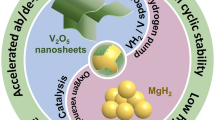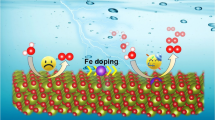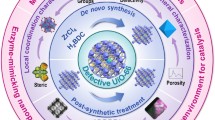Abstract
Developing superior oxidation resistance of high-entropy diborides is critical for extending their potential applications in harsh environments. Herein, we developed non-equimolar (Hf,Zr,Ta,W)B2 high-entropy diborides with superior oxidation resistance by adjusting W contents for the first time. The as-fabricated (Hf0.28Zr0.28Ta0.28W0.15)B2 samples are predicted to possess superior oxidation resistance at 1473–1773 K through the oxidation depth quantitative analysis obtained by machine learning, which is attributed to the reason that the moderate WO3 can effectively inhibit the volatilization of B2O3. Furthermore, a four-layered structure is found in the generated product layers at 1773 K, which is due to the preferential oxidation of Hf and Zr elements at low oxygen partial pressure and the different diffusion activation energies of oxide products. The preferential oxidation of Hf and Zr elements is further demonstrated by the computational phase stability diagrams, and oxygen adsorption energies and charge transfer between oxygen atoms and different metal adsorption sites via first-principles calculations. Such superior performance endows (Hf0.28Zr0.28Ta0.28W0.15)B2 with potential applications as ultrahigh-temperature structural materials.

摘要
开发具有优异抗氧化性能的高熵二硼化物对于扩展其在极端环境中的潜在应用至关重要. 本文通过调控W含量首次制备出了具有优异抗氧化性能的非等摩尔(Hf,Zr,Ta,W)B2高熵二硼化物. 采用机器学习对材料氧化深度进行了量化分析, 发现制备的(Hf0.28Zr0.28Ta0.28W0.15)B2样品在1473–1773 K温度范围内具有优异的抗氧化性能, 这主要是因为适量的WO3可以有效抑制B2O3的挥发. 此外, 由于Hf和Zr元素的优先氧化以及氧化产物的扩散激活能差异, 1773 K下生成的产物层形成了一个四层结构. 通过计算的相稳定性图以及氧原子与不同金属吸附位点之间的吸附能和电荷转移, 进一步证明了Hf和Zr元素的优先氧化. 具有优异抗氧化性能的非等摩尔(Hf0.28Zr0.28Ta0.28W0.15)B2高熵二硼化物在超高温结构材料领域具有潜在的应用前景.
Similar content being viewed by others
References
Rost CM, Sachet E, Borman T, et al. Entropy-stabilized oxides. Nat Commun, 2015, 6: 8485
Ye B, Wen T, Nguyen MC, et al. First-principles study, fabrication and characterization of (Zr0.25Nb0.25Ti0.25V0.25)C high-entropy ceramics. Acta Mater, 2019, 170: 15–23
Chu K, Qin J, Zhu H, et al. High-entropy perovskite oxides: A versatile class of materials for nitrogen reduction reactions. Sci China Mater, 2022, 65: 2711–2720
Gild J, Zhang Y, Harrington T, et al. High-entropy metal diborides: A new class of high-entropy materials and a new type of ultrahigh temperature ceramics. Sci Rep, 2016, 6: 37946
Liu D, Liu H, Ning S, et al. Synthesis of high-purity high-entropy metal diboride powders by boro/carbothermal reduction. J Am Ceram Soc, 2019, 102: 7071–7076
Tallarita G, Licheri R, Garroni S, et al. Novel processing route for the fabrication of bulk high-entropy metal diborides. Scripta Mater, 2018, 158: 100–104
Sarker P, Harrington T, Toher C, et al. High-entropy high-hardness metal carbides discovered by entropy descriptors. Nat Commun, 2018, 9: 4980
Ye B, Wen T, Huang K, et al. First-principles study, fabrication, and characterization of (Hf0.2Zr0.2Ta0.2Nb0.2Ti0.2)C high-entropy ceramic. J Am Ceram Soc, 2019, 102: 4344–4352
Ye B, Wen T, Liu D, et al. Oxidation behavior of (Hf0.2Zr0.2Ta0.2Nb0.2Ti0.2)C high-entropy ceramics at 1073–1473 K in air. Corrosion Sci, 2019, 153: 327–332
Chu Y, Yu R, He G, et al. Combustion synthesis of high-entropy carbide nanoparticles for tetracycline degradation via persulfate activation. Sci China Mater, 2022, 65: 3144–3149
Wen T, Liu H, Ye B, et al. High-entropy alumino-silicides: A novel class of high-entropy ceramics. Sci China Mater, 2020, 63: 300–306
Zhang P, Liu X, Cai A, et al. High-entropy carbide-nitrides with enhanced toughness and sinterability. Sci China Mater, 2021, 64: 2037–2044
Wen T, Ye B, Nguyen MC, et al. Thermophysical and mechanical properties of novel high-entropy metal nitride-carbides. J Am Ceram Soc, 2020, 103: 6475–6489
Gild J, Wright A, Quiambao-Tomko K, et al. Thermal conductivity and hardness of three single-phase high-entropy metal diborides fabricated by borocarbothermal reduction and spark plasma sintering. Ceramics Int, 2020, 46: 6906–6913
Kirnbauer A, Wagner A, Moraes V, et al. Thermal stability and mechanical properties of sputtered (Hf,Ta,V,W,Zr)-diborides. Acta Mater, 2020, 200: 559–569
Qin M, Gild J, Wang H, et al. Dissolving and stabilizing soft WB2 and MoB2 phases into high-entropy borides via boron-metals reactive sintering to attain higher hardness. J Eur Ceramic Soc, 2020, 40: 4348–4353
Feng L, Fahrenholtz WG, Hilmas GE, et al. Effect of Nb content on the phase composition, densification, microstructure, and mechanical properties of high-entropy boride ceramics. J Eur Ceramic Soc, 2021, 41: 92–100
Zhang W, Dai FZ, Xiang H, et al. Enabling highly efficient and broadband electromagnetic wave absorption by tuning impedance match in high-entropy transition metal diborides (HE TMB2). J Adv Ceram, 2021, 10: 1299–1316
Tallarita G, Licheri R, Garroni S, et al. High-entropy transition metal diborides by reactive and non-reactive spark plasma sintering: A comparative investigation. J Eur Ceramic Soc, 2020, 40: 942–952
Backman L, Gild J, Luo J, et al. Part II: Experimental verification of computationally predicted preferential oxidation of refractory high entropy ultra-high temperature ceramics. Acta Mater, 2020, 197: 81–90
Guo R, Li Z, Li L, et al. Microstructures and oxidation mechanisms of (Zr0.2Hf0.2Ta0.2Nb0.2Ti0.2)B2 high-entropy ceramic. J Eur Ceramic Soc, 2022, 42: 2127–2134
Kavak S, Bayrak KG, Mansoor M, et al. First principles calculations and synthesis of multi-phase (HfTiWZr)B2 high entropy diboride ceramics: Microstructural, mechanical and thermal characterization. J Eur Ceramic Soc, 2023, 43: 768–782
Liu D, Wen T, Ye B, et al. Synthesis of superfine high-entropy metal diboride powders. Scripta Mater, 2019, 167: 110–114
Varvak M. Ellipsoidal/radial basis functions neural networks enhanced with the Rvachev function method in application problems. Eng Appl Artif Intelligence, 2015, 38: 111–121
Pan M, Tang W, Xing Y, et al. The clamping position optimization and deformation analysis for an antenna thin wall parts assembly with ASA, MIGA and PSO algorithm. Int J Precis Eng Manuf, 2017, 18: 345–357
Silvestroni L, Stricker K, Sciti D, et al. Understanding the oxidation behavior of a ZrB2−MoSi2 composite at ultra-high temperatures. Acta Mater, 2018, 151: 216–228
Wang V, Xu N, Liu JC, et al. VASPKIT: A user-friendly interface facilitating high-throughput computing and analysis using VASP code. Comput Phys Commun, 2019, 267: 108033
van de Walle A, Tiwary P, de Jong M, et al. Efficient stochastic generation of special quasirandom structures. Calphad, 2013, 42: 13–18
Doležal TD, Samin AJ. Adsorption of oxygen to high entropy alloy surfaces for up to 2 ML coverage using density functional theory and monte carlo calculations. Langmuir, 2022, 38: 3158–3169
Kazemzadeh Dehdashti M, Fahrenholtz WG, Hilmas GE. Effects of temperature and the incorporation of W on the oxidation of ZrB2 ceramics. Corrosion Sci, 2014, 80: 221–228
Humphry-Baker SA, Ramanujam P, Smith GDW, et al. Ablation resistance of tungsten carbide cermets under extreme conditions. Int J Refractory Met Hard Mater, 2020, 93: 105356
Pan J, Tong J, Tian M (eds.). Fundamentals of Materials Science. Beijing: Tsinghua University Press, 2011
Osei-Agyemang E, Balasubramanian G. Surface oxidation mechanism of a refractory high-entropy alloy. npj Mater Degrad, 2019, 3: 20
Zhang P, Yang Y, Duan X, et al. Density functional theory calculations for insight into the heterocatalyst reactivity and mechanism in persulfate-based advanced oxidation reactions. ACS Catal, 2021, 11: 11129–11159
Zhou X (eds.). Inorganic Chemistry. Beijing: Tsinghua University Press, 2012
Acknowledgements
This work was supported by the National Key Research and Development Program of China (2022YFB3708600), the National Natural Science Foundation of China (52122204 and 51972116), and Guangzhou Basic and Applied Basic Research Foundation (202201010632).
Author information
Authors and Affiliations
Contributions
Chu Y conceived and designed this work. Wen Z and Tang Z performed the experiments. Meng H, Jiang S, and Liu Y performed the theoretical calculations. Chu Y and Wen Z analyzed the data and wrote the manuscript. All authors commented on the manuscript.
Corresponding author
Additional information
Supplementary information
Supporting data are available in the online version of the paper.
Zihao Wen is currently a PhD student at South China University of Technology. His research interests focus on the oxidation of high-entropy non-oxide ceramics.
Yanhui Chu is currently a professor at South China University of Technology, Guangzhou, China. He received his PhD degree from Northwestern Polytechnical University in 2016. From Jan. 2014 to Sep. 2015, he worked as a visiting scholar at Harvard University. His current research interest mainly focuses on the design, modeling and fabrication of high-entropy ceramics.
Conflict of interest
The authors declare that they have no conflict of interest.
Supplemental Material for
Rights and permissions
About this article
Cite this article
Wen, Z., Meng, H., Jiang, S. et al. Non-equimolar (Hf,Zr,Ta,W)B2 high-entropy diborides enable superior oxidation resistance. Sci. China Mater. 66, 3213–3222 (2023). https://doi.org/10.1007/s40843-023-2461-y
Received:
Accepted:
Published:
Issue Date:
DOI: https://doi.org/10.1007/s40843-023-2461-y




